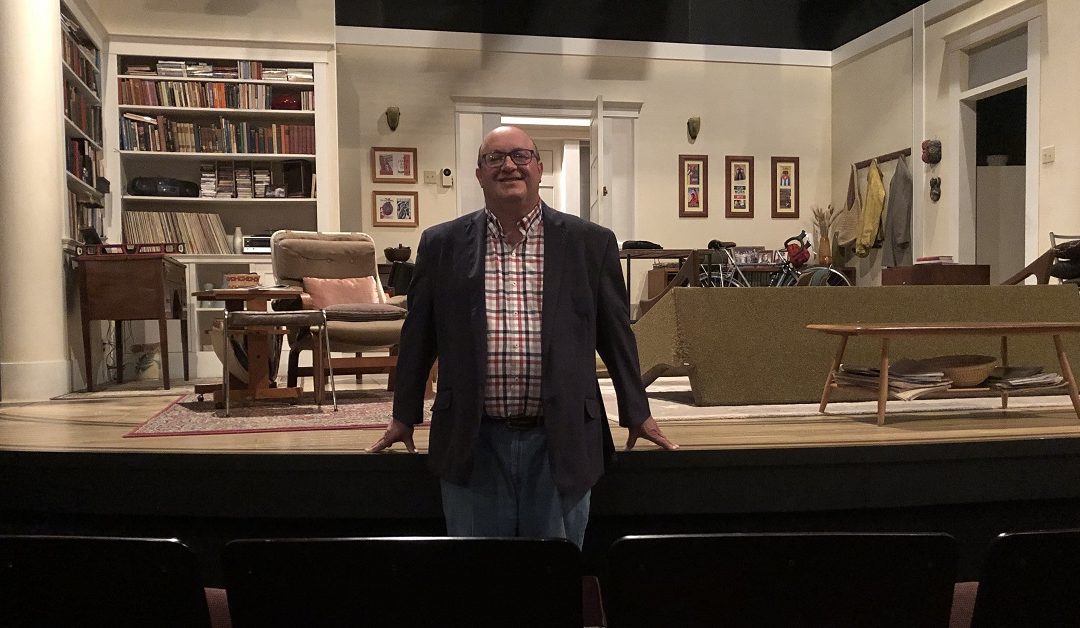By Brita Harrison Brooke. Originally published in the summer 2019 issue of Business Class magazine.
Picture yourself walking into an Italian restaurant. The checkered tablecloths, candlelit tables, accordion music, framed pictures of Italian scenery and the smartly dressed staff, all tell a story about the type of experience you will be having. These elements of storytelling and theatrics are what Dr. Steve Tax, champion of Gustavson’s service management specialization, emphasizes in his research.
Many scholars have described customer service as an experience with the frontline service staff (actors), processes (script) and physical environment (set) resembling a live theatrical performance.
“The idea of customer service as a performance is not new, but my question was, if service is a performance, where can we observe best practices?” says Tax.
He chose to study the theatre because of the industry’s long history of mastering a system delivering performance efficiently and effectively. He turned to the renowned Belfry Theatre in Victoria, BC to learn how performances are designed.
“The process in most theatres is the same but the culture at the Belfry makes it particularly compelling to study,” explains Tax.
The Belfry Theatre is a professional theatre company producing contemporary plays, with an emphasis on Canadian work and promoting artistic, cultural and educational events in Greater Victoria. Tax sought to learn how it is able to reach a high standard of performance in such a short time frame: the Belfry operates on a one-month production cycle. Students in Tax’s customer experience management course go to the Belfry to observe the performance design and apply those elements to the service experience.
Tax has learned that the elements necessary for a good theatre performance also make for a good customer experience. These include authenticity, engagement and empathy. Authenticity enhances customer experiences, allowing them to be more immersed in the performance without distraction. This includes a careful attention to detail. In the Italian restaurant, a distracting element could be something incongruous, such as oompah music playing over the speakers or pictures of Greece adorning the walls.
Engagement refers to the level of audience participation in the performance, which creates a connection and ensures a memorable experience. The Belfry welcomes audience members to the experience the moment they walk in, and everything from the programs to the hosts set the stage for the performance. The Belfry spends considerable time assessing the performance from the point of view of the audience and continually makes adjustments to ensure audience engagement.
How can managers apply the lessons from the theatre in their careers? They can start by seeing themselves as the director of the customer service performance.
“You can’t design the experience the customer has, but you can design and support the performance to achieve the impact you want,” says Tax, adding, “Outstanding service derives from a great service culture focused on telling a compelling story that resonates with customers.” Every element of the performance should be carefully designed to tell that story.
It is also vital the experience be empathetic, designed for the customers themselves. “Empathetic design is based on a deep understanding of what touches the customers,” says Tax. “A good manager should be talking to customers and observing, supporting and coaching front line staff.” As the Belfry experience teaches, teamwork and communication is vital to problem solving and delivering a superior performance.
Finally, Tax observed the passion people in the theatre have for their work, which contributes to authenticity and customer engagement. “You can sense the emotion when employees are passionate for the roles they play,” says Tax.
To Tax, the theatre provides an opportunity for his students to experience the key elements of a highly professional and effective performance. It helps them understand that all the world is truly a stage when it comes to the service experience.
Photo: Mark Dusseault


